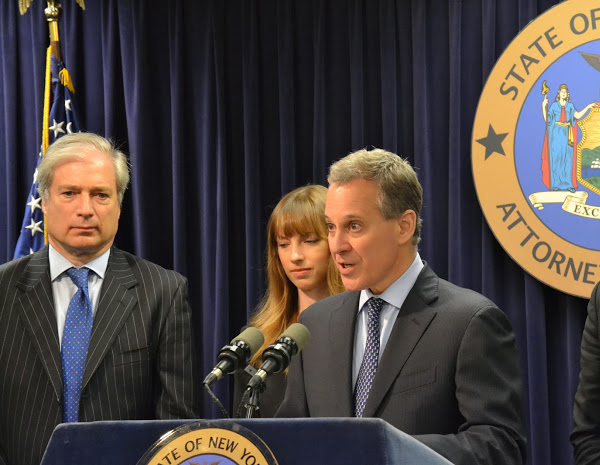Officials in three major cities say phone thefts have dropped dramatically since the introduction of “kill switches” to remotely disable a lost or stolen handset.
The figures comes from New York Attorney General Eric T Schneiderman (pictured), San Francisco District Attorney George Gascon and London Mayor Boris Johnson. They make up the leadership of the Secure Our Smartphones Initiative, a political move to pressure smartphone manufacturers to include killswitches. They argue that the prospect of a stolen phone being useless gives thieves and muggers much less incentive to take a phone.
The figures published today are set-up slightly differently on either side of the Atlantic, but in all three cases the officials are pointing to Apple’s introduction of a killswitch in September 2013 as the key factor.
The US figures, from police departments, cover January 2013 to December 2014. New York reports a 16 percent drop in all cell phone robberies, but a 25 percent drop for iPhone robberies. San Francisco reports a 27 percent overall drop and then a 40 percent drop for iPhones.
The London figures compare the 12 months starting in October 2013 (right after the iPhone killswitch launch) with the previous 12 months, and cover all phones. They show a 40 percent drop in “thefts from person” (in other words, pickpocketing) and a 38 percent drop in personal robberies (theft with violence or the threat of violence.) It seems to be an ongoing trend: the monthly average of phone thefts is now half what it was when the killswitch launched.
By the end of this year, all major operating systems will support killswitches. That’s partly driven by a California law that takes effect on July 1 requiring all phones sold in the state to not only include a killswitch, but have it switched on by default, putting the onus on users to actively opt-out. While the law only affects California, manufacturers are expected to respond by including a default killswitch on all phones sold in the US.

